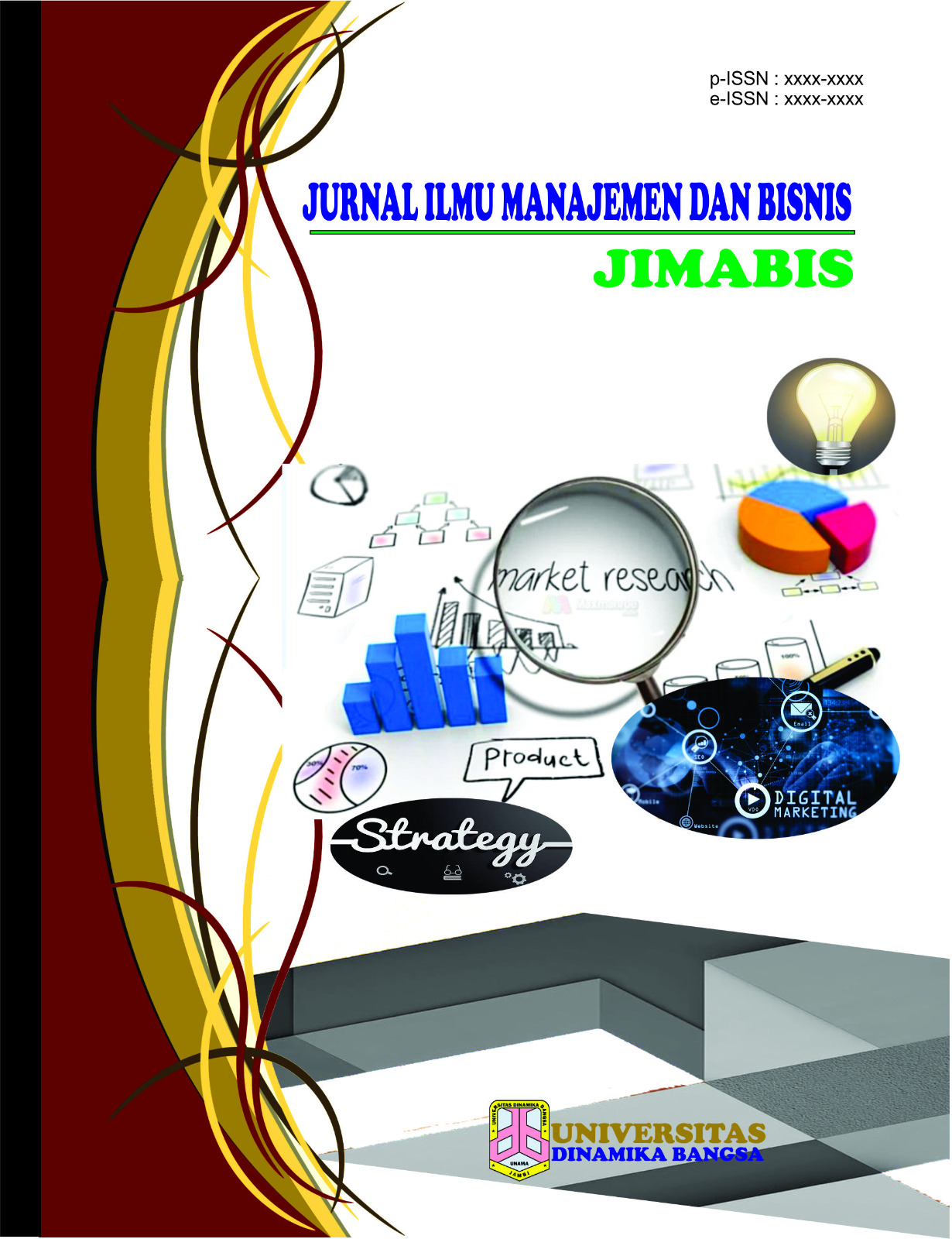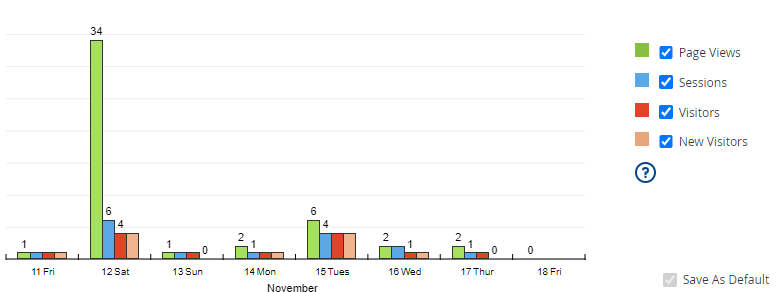Analisis Penerapan Metode User-Centered Design pada Augmented Reality (AR) dengan Marker Based Tracking
DOI:
https://doi.org/10.33998/processor.2024.19.1.1640Keywords:
Augmented Reality, Faculty Promotion, QR-Code Marker, Functionality Testing, Performance EvaluationAbstract
This research investigates the use of Augmented Reality (AR) technology in the context of higher education faculty promotion. The main focus of this research is to design and test an AR application that uses a marker in the form of a QR-Code placed on the faculty study program brochure. This AR application aims to provide prospective students with an interactive experience in exploring the facilities, study programs and academic potential of the faculty. The location of the research was at the Faculty of Science and Technology, Jambi University. The method for designing faculty promotional tools in the form of AR uses the UCD (User-Centered Design) method. This research includes the design stage, AR application development, as well as functionality testing and application performance evaluation. Performance testing is carried out based on the distance between the user's device and the QR-Code marker. Performance testing aims to understand the extent to which an application can function in various usage situations. The results of this study provide in-depth insight into the potential of AR as a faculty promotion tool, considering the advantages and limitations of marker-based tracking methods. These findings strengthen understanding of how AR technology can add value to prospective student recruitment efforts and guide the development of more effective AR applications in the future
Downloads
References
G. A. Gulo, N. W. Nurhidayati, D. Aprillia, and M. Maruloh, “Sistem Penunjang Keputusan Pemilihan
Karyawan Terbaik Di Restoran Soto Pak J Menggunakan Metode Ahp,” J. Larik Ldng. Artik. Ilmu
Komput., vol. 1, no. 1, pp. 11–20, 2021, doi: 10.31294/larik.v1i1.504.
Devi, A. Sunoto, and Hendrawan, “Perancangan Sistem Informasi Penjualan Pada,” J. Ilm. Mhs. Sist. Inf.,
vol. 2, no. 2, pp. 133–144, 2020.
P. Dwihantoro, D. Susanti, P. Sukmasetya, and R. Faizah, “Digitalisasi Kesenian Njanen: Strategi
Pelestarian Kebudayaan Melalui Platform Sosial Media,” Madaniya, vol. 4, no. 1, pp. 156–164, 2023.
Y. H. Haw et al., “Detection of Basal Stem Rot Disease Using Deep Learning,” IEEE Access, vol. 11, no.
April, pp. 49846–49862, 2023, doi: 10.1109/ACCESS.2023.3276763.
M. Adenuddin Alwy, “Manajemen Sumber Daya Manusia Di Era Digital Melalui Lensa Manajer Sumber
Daya Manusia Generasi Berikutnya,” SIBATIK J. J. Ilm. Bid. Sos. Ekon. Budaya, Teknol. dan Pendidik.,
vol. 1, no. 10, pp. 2265–2276, 2022, doi: 10.54443/sibatik.v1i10.334.
D. Darwis, N. Siskawati, and Z. Abidin, “Penerapan Algoritma Naive Bayes Untuk Analisis Sentimen
Review Data Twitter Bmkg Nasional,” J. Tekno Kompak, vol. 15, no. 1, p. 131, 2021, doi:
33365/jtk.v15i1.744.
A. N. Isneni, T. T. Putranto, and D. Trisnawati, “Analisis Sebaran Daerah Rawan Longsor Menggunakan
Remote Sensing dan Analytical Hierarchy Process (AHP) di Kabupaten Magelang Provinsi Jawa Tengah,”
J. Geosains dan Teknol., vol. 3, no. 3, pp. 149–160, 2020, doi: 10.14710/jgt.3.3.2020.149-160.
M.Syarifuddin Yusuf, “IMPLEMENTASI METODE ANALYTIC HIERARCHY PROCESS (AHP)
DALAM KELAYAKAN PENGAJUAN KREDIT PADA BMT UMMAT SEJAHTERA ABADI
JEPARA,” J. Al-ilmi, vol. 13, no. 1, pp. 110–117, 2021.
A. Nofriyanto, Nurhadi, and Mulyadi, “Pengenalan Rambu Lalu Lintas Sebagai Sarana Pembelajaran
Interaktif Bagi Siswa Sekolah Dasar Berbasis Augmented Reality ( Studi Kasus : SDN 134 / IV Jambi
Selatan ),” J. Ilm. Mhs. Tek. Inform., vol. 3, no. 2, pp. 115–122, 2021.
C. Baziotis, N. Pelekis, and C. Doulkeridis, “DataStories at SemEval-2017 Task 4: Deep LSTM with
Attention for Message-level and Topic-based Sentiment Analysis,” in Proceedings ofthe 11thInternational Workshop on Semantic Evaluations (SemEval-2017), 2018, no. 1, pp. 747–754, doi:
18653/v1/s17-2126.
Y. H. Haw et al., “Classification of basal stem rot using deep learning: a review of digital data collection
and palm disease classification methods,” PeerJ Comput. Sci., vol. 9, pp. 1–30, 2023, doi: 10.7717/PEERJCS.1325.
P. G. V. Naranjo, Z. Pooranian, M. Shojafar, M. Conti, and R. Buyya, “FOCAN: A Fog-supported smart
city network architecture for management of applications in the Internet of Everything environments,” J.
Parallel Distrib. Comput., 2018, doi: 10.1016/j.jpdc.2018.07.003.
V. Abdurrohman and S. Nita, “Rancang Bangun Sistem Informasi Penjualan Smartphone Berbasis Web,”
Semin. Nas. Teknol. Inf. dan Komun., pp. 43–48, 2020.
P. Aini, I. Purnama, and D. Irmayani, “Sistem Informasi Penjualan Handphone Dan Accessories Pada
Toko Nisa Ponsel Berbasis Web,” J. Comput. Sci. Inf. Syst., vol. 1, no. 1, pp. 19–23, 2020.
F. G. Lestari and Suroto, “Sistem Informasi Penjualan Handphone Online Di Toko Bbenk Shop Batam
Berbasis Smartphone Android,” vol. 10, no. 2, 2020.
X. He, C. Li, P. Zhang, J. Yang, and X. E. Wang, “Parameter-Efficient Model Adaptation for Vision
Transformers,” Proc. 37th AAAI Conf. Artif. Intell. AAAI 2023, vol. 37, pp. 817–825, 2023, doi:
1609/aaai.v37i1.25160.
Fachruddin, M. R. Pahlevi, M. Ismail, E. Rasywir, and Y. Pratama, “Analisis Usability Pada Implementasi
Sistem Pengelolaan Keuangan Masjid Menggunakan USE Questionnaire,” J. Media Inform. Budidarma,
vol. 4, pp. 1216–1224, 2020, doi: 10.30865/mib.v4i4.2518.
R. ROSDIANA, Ruli Herdiana, Ryan Hmonangan, Umi Hayati, and Tati Suprapti, “Prediksi Financial
Distress Perusahaan Food and Beverage Menggunakan Metode Naive Beyes,” J. Ilm. Betrik, vol. 13, no.
, pp. 208–220, 2022, doi: 10.36050/betrik.v13i2.461.
A. Ferdiansyah and H. Kurniawan, “Perancangan Aplikasi Media Pembelajaran Pengenalan Kain
Nusantara Menggunakan Augmented Reality Berbasis Android,” It (Informatic Tech. J., vol. 7, no. 2, p.
, 2019, doi: 10.22303/it.7.2.2019.196-205.
R. Yousef, G. Gupta, N. Yousef, and M. Khari, A holistic overview of deep learning approach in medical
imaging, vol. 28, no. 3. Springer Berlin Heidelberg, 2022.
G. Putra and B. R. Fajri, “Rancang Bangun Aplikasi Android Pengenalan Unsur Atom Pada Mata Pelajaran
Kimia Berbasis Augmented Reality,” J. Pendidik. Tambusai, vol. 6, no. 1, pp. 1142–1148, 2022, [Online].
Available:
oad/3047/2590.























